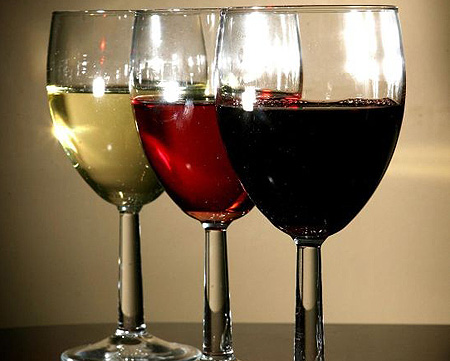Learn the basics of wine and food pairings to create your own pairings. So this will guide you and show the steps on how to select. Also, learn what to look for in the recipes in order to make the wine match.
Wine and Food Pairing creates a balance between the components of the meal and the characteristics of the wine. Furthermore, as much as wine and food are complex, the basics are simple to understand.
Wine and Food Pairing Tips
First of all, if your just starting out the following basics can consistently great pairing. You will get more familiar with different wines, more confident and able to experiment and enjoy.
- Wine should be sweeter than the food.
- The Wine should be more acidic that the food.
- Red wines pair best with bold flavored meats (Red Meats).
- The Wine should have the same flavor intensity as the food.
- White wines pair best with light – intensity meats (Fish or Chicken)
- Bitter wines are best balanced with fat.
- White, Sparkling or Rose create contrasting pairings.
- Best to match the wine with the sauce that the meat.
- Red wined create congruent pairings.
Wine and Food Pairings: Congruent vs Contrasting Pairings
A Congruent pairing creates a balance by amplifying shared flavor compounds. While your Contrasting pairings creates balance by contrasting tastes and flavors.
Wine and Food Pairings: Basic Taste Components in Wine
Wine lacks three tastes fatness, spiciness, and saltiness but does contain acidity, bitterness and sweetness in varies degree. As a result, three different categories;
- White, Rose and Sparkling wines have more acidity.
- Red wines have more bitterness.
- Sweet wines have more sweetness.
Basic Taste Components in Food
Simplify a dish down to its basic dominant tastes. For example, baked macaroni has 2 primary components: fat and salt. Southern barbecue is a bit more complex and includes fat, salt, sweet and spice (plus a little acid!). Even dishes without meat can be simplified. For example, a green salad offers acidity and bitterness; creamed corn offers fatness and sweetness.
Consider the Intensity
Likewise, is the food light or rich. A salad might be consider light but the dressing may be high in acidity. Also if intensity is not known focus on the acidity, fat or sweetness.
Wine and Food Pairings: Is it light or bold.
- Cabernet Sauvignon is more full bodied and has high tannin (Bitterness)
- Sauvignon Blanc is Light bodied but it has more acidity.
- Pinot Noir is lighter bodied for red wine) and it does not have to much tannin.
- Chardonnay has more body, but usually not too acidic.
Find Contrasting or Congruent Pairings.
The basic tastes have been identified in your meal. So, you can start creating pairing options. Let’s say a baked macaroni dish, which has many opportunities.
Complementary Pairing:
A white wine, such as Pinot Grigio, or Sauvignon Blanc with it’s high acidity will complement the fat in the macaroni. So, a traditional macaroni and cheese recipe with a creamy be’chamel sauce matched with this zesty wine would create a Complementary Pairing.
Congruent Pairing:
White wines like a Viognier or Chardonnay with it’s creaminess will add to the creaminess in the meal. A macaroni and cheese with a sauce matched with a bechamel creamy wine would a create a Congruent Pairing.
Get Creative:
Create a balance with the major taste components in both the wine and the dish, you can get creative by pairing the more subtle flavors. Examples using variants are found from the list below:





